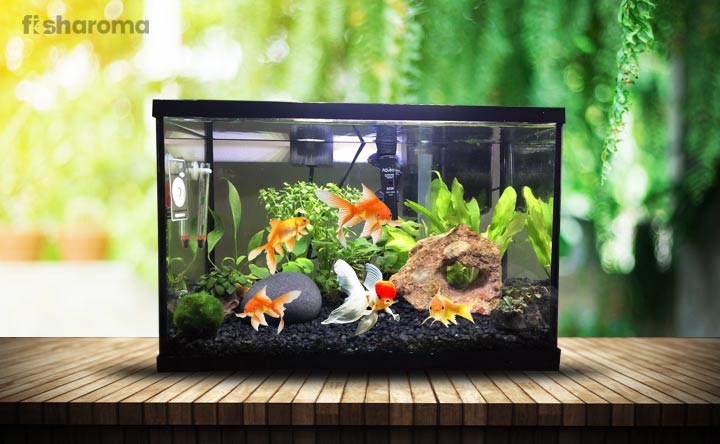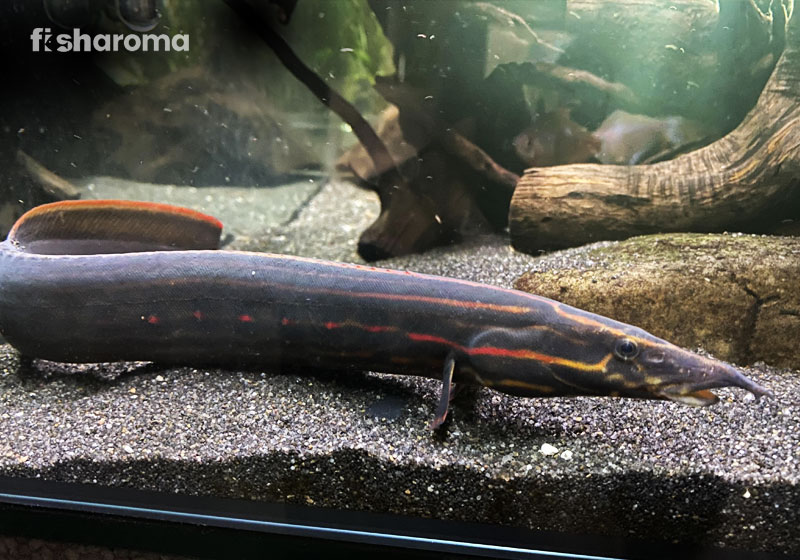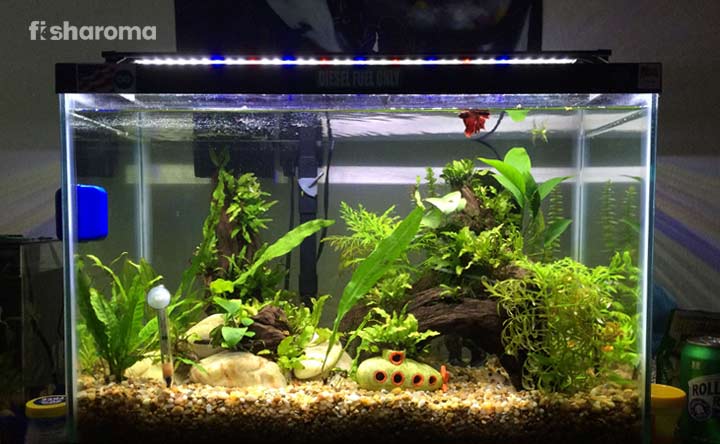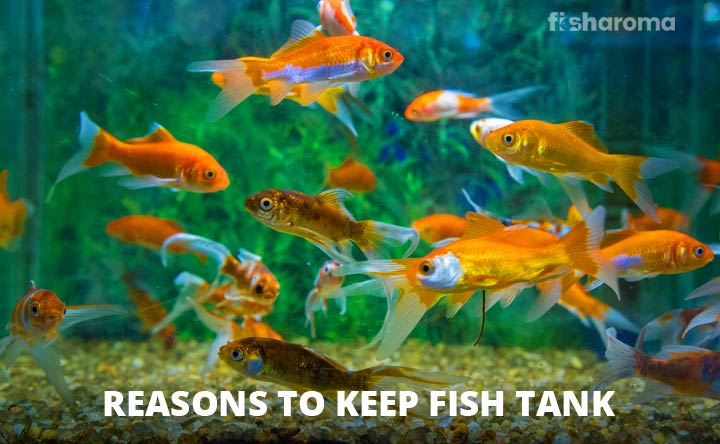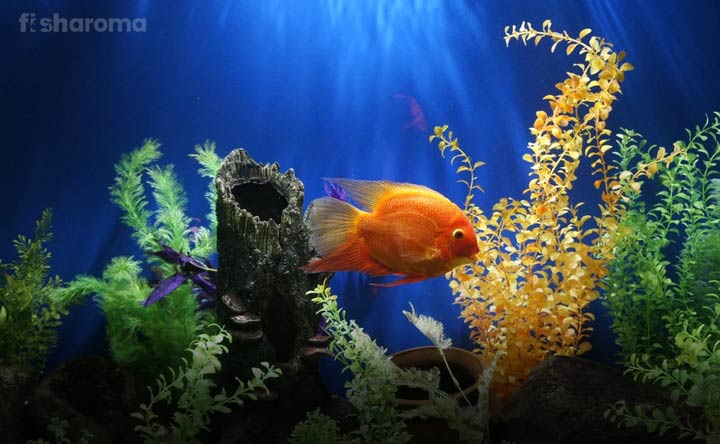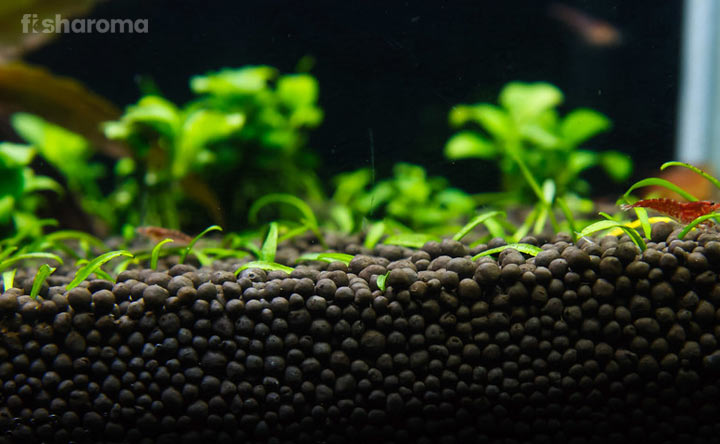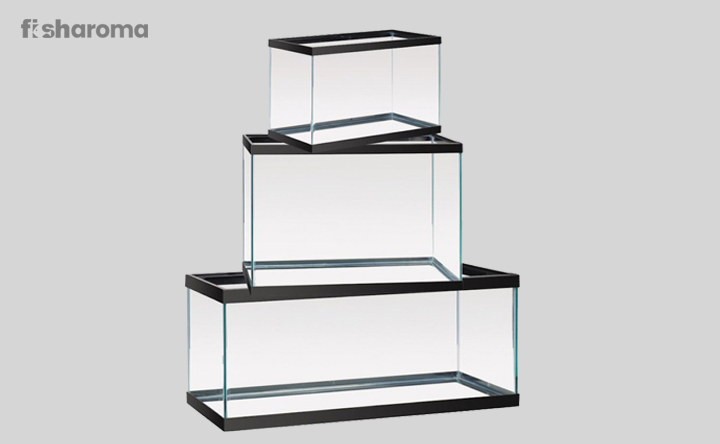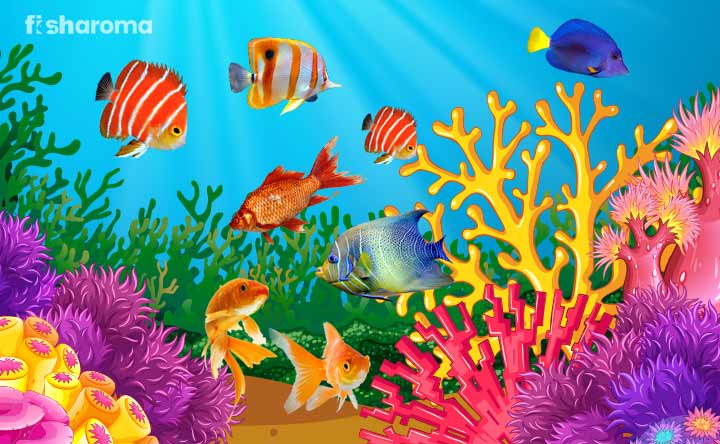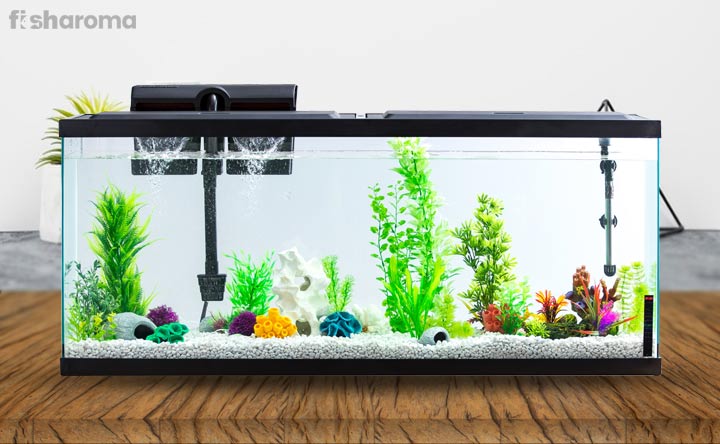How to Clean a Fish Tank in Simple DIY Steps
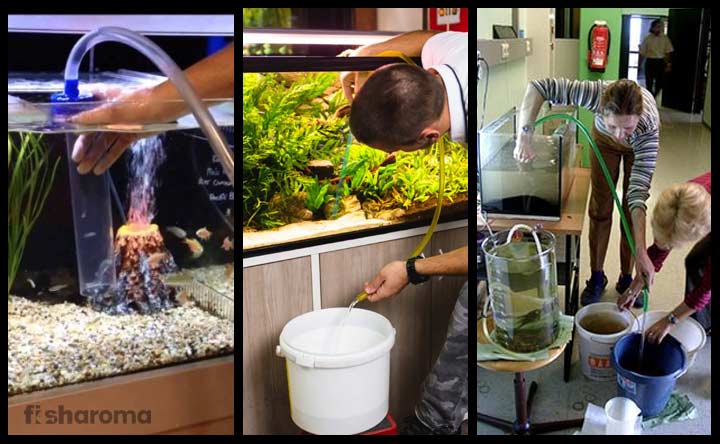
Every living being likes a clean environment in their home, whether they are animals, birds, fish or human beings. If you are providing a swelling place to pet fish and including them in your family then don’t you think, it’s your responsibility to maintain its security and hygiene? Most fish-enthusiasts will definitely realize the seriousness of cleanliness of a fish tank for managing hygiene; if you are one of them then you will definitely think about the ways to clean a fish tank and provide a good ambiance to your pet fish. To ensure the good health and wellbeing of your little friends, it is necessary to keep the condition of the aquarium clean on a weekly routine.
Don’t worry! It’s not a very tough process to clean an aquarium. Just collect the necessary things first and then start cleaning in a step-wise process.
Why Clean a Fish Tank
As a beginner, you may think why it’s required to clean a fish tank every week or month, but expert aquarist says, without a clean and safe environment, fish and other water species may not survive for a long time. There are some necessary reasons defined below that will help you mention the reasons to clean an aquarium.
Controlling Harmful Chemicals and Compounds
There are some chemicals that get stored in the fish tanks such as ammonia and nitrate, which are very injurious to the health of the small and large fish in an aquarium. The high level of nitrate can suffocate and stress your fish, and also make them prone to vulnerable diseases and poor development. So, to regulate the nitrogen cycle and keep the toxins out.
Nitrate is not much harmful but too much of chemicals may really harm the aquatic species. Therefore, change the water of a fish tank 3 to 4 times in a week to balance the compound elements and manage the health of the fish. Moreover, try to keep aerated water in the tank for the freshness.
Reducing Decomposed Waste Materials
The dead plants and the decomposed corpse of the fish contain harmful chemicals like phosphate and toxic nitrogenous products that make the tank dirty. Also, these decayed things contain harmful fungal and bacterial infections that are the sources of life-threatening diseases.
So, to reduce the acidic environment and provide a safe environment, try to clean the water and decorations of the fish tank by throwing unnecessary things such as dead plants, algae, and dead fish out from the aquarium. Keeping the tank and the water clean will satisfy you and relieve the stress of your little swimming-companions.
Helping to Grow Essential Minerals
If you clean the water in the tank then the harmful chemicals can be removed which will help in growing essential minerals in the aquarium. Moreover, consuming the essential minerals and fresh water in the tank will help fish develop fast with age.
Remember, foods are often given in the fish tank for the fish but if those foods get rotten then the tank may get poisonous. So, keeping clean and fresh water in a tank is a mandatory part of fishkeeping. You should use safe aerated RO proved water for cleaning the tank – the home of your pet fish.
What are the Things Needed to Clean a Fish Tank
Cleaning an aquarium is not a tough task if you collect some major things while planning to clean or wash the aquarium. Following things are a few necessary objects that will be needed to clean the tank:
- Bucket of Fresh Aerated Water – This freshwater will require cleaning the inner and outer parts of the aquarium.
- Fish-Net – A fishnet will need to shift the fish to another jar.
- Another Clean Fish Tank – This tank or jar will be the place where the water species will be kept during the time of tank-cleaning.
- Razor Blade – A razor blade will require taking out the unnecessary rust, iron, and stubborn algae from the fish tank.
- Filter Brush – A filter brush is needed to scrub out the dirt at the innermost, topmost, outermost, and side parts of the tank.
- Algae Scraper/Pad – An algae pad or scraper will help in scrubbing out the algae and decayed plant leaves or dead cells/eggs of the fish from the tank.
- Water Siphon Vacuum – A water siphon helps the maintenance of the aquarium by changing the water through the pumping process, and pulling unnecessary gravel and debris out from the tank.
- Liquid Soap – The liquid detergents and soaps are needed to wash out the dirt and iron of the water and decomposed things from the tank.
- Bleach – You can also add 10% of bleach powder in the detergent or liquid soap to clean the tank. It will easily take out the dirt from the root and kill the bacterial and fungal infections in the aquarium.
- Glass Cleaner – The glass cleaner will help in cleaning the outer and inner portion of the glasses in the tank so that all the parts shine like crystals.
- Vinegar – Adding vinegar and lemon in water will help in bringing quartz-shine to the water, at the entire fish tank, and the other objects.
- Paper Towels/Bath Towels – The towels are used to rinse off the water and other residues on all the sides of the fish tank.
Easy DIY Steps to Clean a Fish Tank
Don’t panic that how to clean a fish tank, just plan step-wise, so that the work does not seem laborious and confusing to you. Take a look at a few DIY tank cleaning steps:
Step 1: Shift the Fish and Other Species from One Tank to Another Aquarium
It is your primary work to shift the fish of the aquarium with the help of a fish net to another tank. Make sure the other tank is clean and filled with aerated water. For cleaning a fish tank, shifting the living species from the water is necessary because this will help you wash and clean the entire tank properly. Just, shift your colorful buddies safely, so that it does not harm or injure the little fish at any cost.
Step 2: Remove the Dirty Water from the Fish Tank
It is necessary to replace 20% of the water in a fish tank every 2-3 weeks. Pick a water siphon vacuum that is attached to a hose. Use the siphon vacuum to throw out the water from the aquarium, and clean the rocks and gravel in the tank. Along with the water, you need to use mild soap, vinegar, lemon, and bleach to clean the entire tank sides and corners. Moreover, you can use a scraper or filter brush to clean the tank.
Step 3: Eliminate Algae, Dirt, and Decomposed Things
Remove the decorations and other objects like rocks, shells, corals, filter, etc. from the fish tank firstly. After that, clean each object with a scrapper, vinegar, lemon, and liquid soap to bring the shine of novelty. Also, throw out the decomposed live or dead plants, old show plants, dead corpse of fish and other dirt from the fish tank which are the main source of bacterial and fungal infections.
Step 4: Cut off the Algae from the Fish Tank
The plants and old stagnant water are the reason for algae in the corners, bottom, fish caves and on the rocks of the aquarium. Use a razor blade or algae scrapper to scrap out the algae on the rocks, caves, corners, and sides of the aquarium. You can also use liquid soap with pad to scrub the stubborn algae.
You will also find magnetic algae cleaner in the market that consists of two magnets with a soft covering. Attempt to drag out the magnet around the glass tank. Be wise to select such cleaner that will not put a scratch on the glass.
Some fish breeds are tank cleaners and they clean the tank by consuming algae and dead things so you can keep them in your aquarium.
Step 5: Clean the Filter of the Fish Tank
Generally, a sponge filter is used for the fish tank, and you need to clean the filter regularly. So, use a sponge brush and a very mild liquid soap to scrub the dirt and algae away from the filter. Also, you need to clean out the filter fiber and the ceramic rings to kill the bacteria.
After cleaning, rinse the filter with a dry and clean towel to maintain the filter for a long time period. It is necessary to keep the filters of the aquarium clean because water gets circulated to the aquarium through the pump. Moreover, the filter also contains ion, ammonia, and carbon that are needed to be replaced every couple of weeks. You should also clean the tubing of the filter with filter brush.
Step 6: Dry-Up the Aquarium and the Decorations of the Fish Tank
After cleaning and washing the entire fish tank, rinse off the water particles and other objects of the aquarium with a dry and clean bath towel before replacing water and the aquatic species to the tank.
Step 7: Replace Water in the Fish Tank
Now, you can add water to the aquarium but remember, it should be distilled and aerated without any fungal infections and germs. Keeping clean water in an aquarium will really help your fish to survive for an elongated time period. You need to set two types of tanks – Saltwater Tank and Freshwater Tank with different setups:
Freshwater Tank Setup
For setting a freshwater tank, add chlorine in the aerated water after replacing it in the aquarium. Keep a water-testing kit that will help check the temperature, pH level, and hardness of the water. Have a look at the table to follow the water setup condition:
| Parameter | Freshwater Aquarium |
| Temperature | 72-82 Degree Fahrenheit |
| Nitrite | 0.0 |
| General Hardness | 4-12 GH |
| Carbonate Hardness | 4-8 KH |
| pH | 6.5-7.5 |
| Nitrate | <50 ppm |
| Ammonia | 0.0 |
Never keep the fruits of ocean-like shells, oysters, corals, and reefs in a freshwater aquarium because the chemicals and salt of the marine objects may harm freshwater fish.
Saltwater Tank Setup
When you are setting a marine water tank, you need to add salt, aerated liquid and plain water in the tank. With the help of the water-testing kit, check the temperature of the water. Just take a look at the table where the perfect water conditions are defined:
| Parameter | Saltwater Aquarium |
| Temperature | 72-82 Degree Fahrenheit |
| Alkalinity | 8-12 DKH |
| pH | 8.1-8.4 |
| Ammonia | Undetectable |
| Special Gravity | 1.20-1.025 |
| Nitrate-Nitrogen | <30 ppm |
| Nitrite | Undetectable |
| Iodine | 0.04-0.10 ppm |
| Calcium | 350-450 ppm |
| Magnesium | 1150-1350 ppm |
| Strontium | 4-10 ppm |
| Phosphate | <1.0 ppm |
If you have less idea about cleaning and replacing adequate level and temperature of water for freshwater and saltwater aquarium then ask expert aquarists to set the fish tank properly.
Step 8: Keep Your Pet Fish and Other Species in the Fish Tank
After cleaning the home of your little friends, keep them in their crystal clean home, and provide them a safe and natural environment, so that they can breathe properly.
Always carry them with the fish jar and immediately keep in the water, otherwise they may face the respiratory problem.
Tips to Maintain the Fish Tank Regularly
For managing the cleanliness and hygiene of the aquatic species, try to prevent your aquarium from getting dirty by following these ways:
Daily Tank Maintenance
It is your daily chore to maintain the health of your fish with the below-mentioned tips:
- While feeding foods to your pet fish, remove the uneaten food particles after some times because the food particles can make the tank dirty.
- Regularly check the water temperature with special thermometer for the comfort of the fish.
- Wipe the outside part of the aquarium with a clean rag every day to maintain the shine of the glass.
Weekly Tank Maintenance
Some tips are needed to follow in every week to maintain the hygiene of the fish:
- Check the above-mentioned temperature, water hardness, and pH level of the water once a week and change it according to saltwater and freshwater tank requirements.
- Clean the filters and the objects of the aquarium twice a week.
Monthly Maintenance
You need to make some changes in the fish tank every month as follows:
- Change the lights of the aquarium every month if needed.
- Clean the entire aquarium and the decorations of the fish tank four times every month.
Aquarium Cleaning FAQs
Here are some FAQs that are given for beginners and expert fish-keepers for setting and cleaning a fish tank as follows:
1. How to Clean a Used Fish Tank?
Make the tank empty before cleaning it and remember to keep necessary things like scrubbing pads, vinegar, bleach and mild soap to clean and wash off a used fish tank.
2. Is it Necessary to Remove the Fish While Cleaning?
It will be better if you remove the fish and other aquatic species from the aquarium while cleaning the tank because the process may injure or disturb the fish.
3. How to Get Rid of Algae from the Tank?
Use simple scrubbers or magnetic scrubbers and gently scrub off the algae from the walls and corners of the aquarium twice a week to get away from them.
4. How to Clean the Gravels in the Aquarium?
Buy gravel-cleaner powder from market to clean the entire gravels and rocks in the fish tank. This detergent definitely helps bring shine in the fish tank.
5. Is it Necessary to Consult with an Expert Aquarist to Clean the Aquarium?
No, it is not needed always; just follow the aforesaid instructions to clean the fish tank but if you want to change the water temperature then an expert’s guide is required.
Remember, the safety, hygiene, health, and cleanliness of your pet fish is your responsibility, so try to get a spare time for your loving swimmer-companions and provide a serene environment to them by cleaning the tank in above-mentioned ways.
Collect More Information Regarding Fish Tank Setup and Cleaning
You can also have a complete look at some other information to set, clean, adjust and formulate the necessity of the fish tanks by reading the following topics:
- What Fish Tank Size Should be Chosen as a Home for Your Pet Fish?: Know appropriate fish tank according to sizes for specific kinds of fish that are related to size and temperament.
- 15 Things Not to Put in a Fish Tank for Safety of Your Pet Fish: Always remember to put essential things but not the unnecessary things in a fish tank that can harm your pet fish.
- How to Clean a Fish Tank in Simple DIY Steps?: If you are a beginner then learn how to set up a fish tank easily in a few DIYs.

